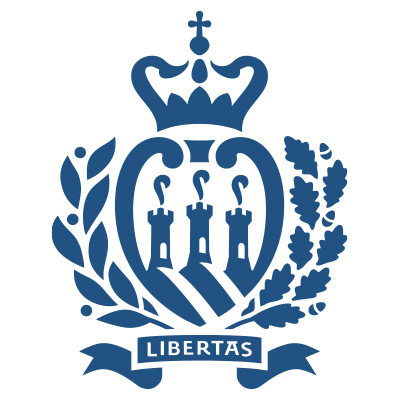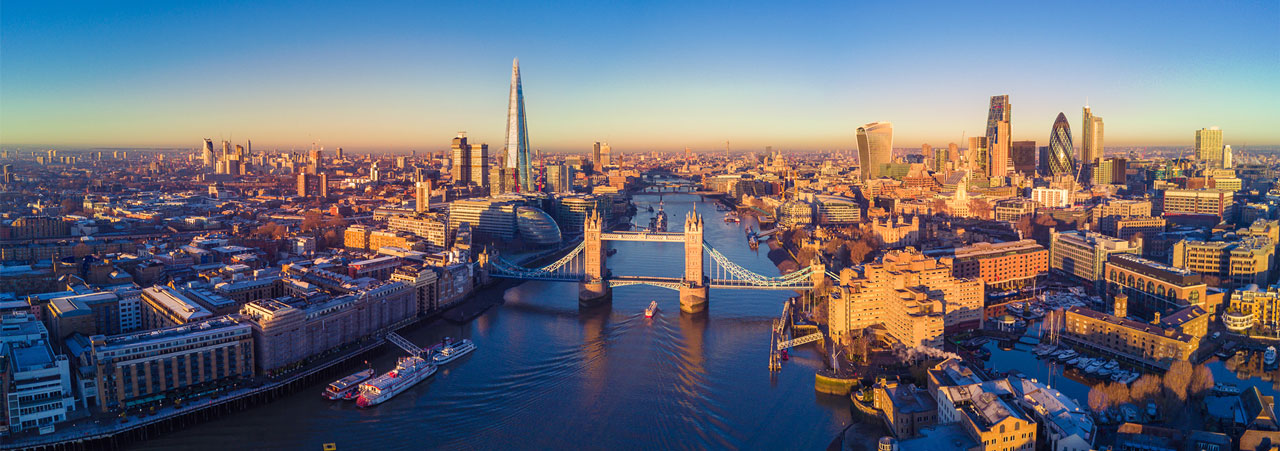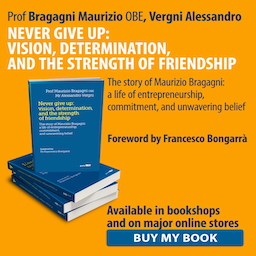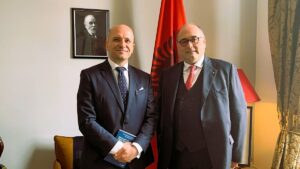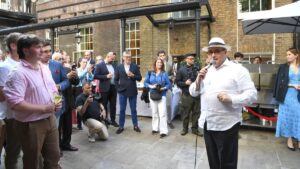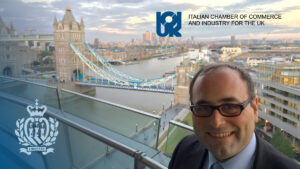In brief
San Marino, ufficialmente Serenissima Repubblica di San Marino, è spesso abbreviato in Repubblica di San Marino. Fondata il 3 settembre 301 d.C., è una delle repubbliche più antiche del mondo sopravvissuta a un'epoca in cui le città-stato si diffondevano in tutta Europa.
La tradizione fa risalire che San Marino fu fondato da un tagliapietre cristiano chiamato Marino il dalmata, fuggito dall'isola di Arbe per sfuggire all'imperatore romano anticristiano Diocleziano. Marino si nascose sulla cima del monte Titano e stabilì una piccola comunità cristiana.
A memoria di Marino il tagliapietre, la terra si ribattezzò "Terra di San Marino," poi "Comunità di San Marino," e finalmente si cambiò al suo nome attuale, "Repubblica di San Marino."
Il suo robusto isolamento ha aiutato l'enclave a svilupparsi e mantenere la propria indipendenza. Il paese divenne una repubblica nel 1300. Un trattato di amicizia e cooperazione del 1862 con l’Italia, da allora rivisto e ampliato, rafforzò l’indipendenza di San Marino.
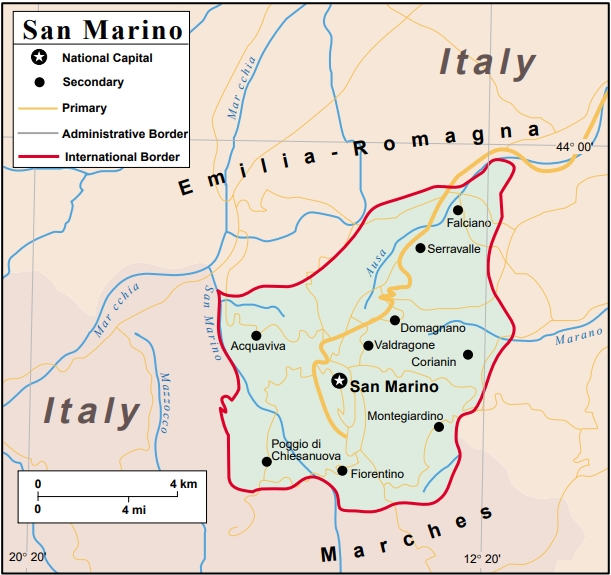
Il territorio sammarinese era costituito solo dal Monte Titano fino al 1463 quando la repubblica si alleò contro Sigismondo Pandolfo Malatesta, Signore di Rimini, che venne poi sconfitto. Di conseguenza, Papa Pio II Piccolomini donò a San Marino i comuni di Fiorentino, Montegiardino e Serravalle. Nello stesso anno il comune di Faetano aderì autonomamente alla repubblica. Da allora, la dimensione del paese è rimasta la stessa.
San Marino è stata occupata da militari stranieri due volte nella sua storia, entrambe per brevi periodi di tempo. Nel 1503 Cesare Borgia, detto il Valentino, occupò la Repubblica fino alla sua morte, avvenuta alcuni mesi dopo. Nel 1739, il Cardinale Alberoni usò la forza militare per occupare il Paese, ma la disobbedienza civile fu usata per protestare, e le note clandestine inviate al Papa per ottenere giustizia ebbero come risposta il riconoscimento dei diritti di San Marino e il ripristino dell'indipendenza.
Nel 1797, nonostante l'invasione dell'Italia da parte di Napoleone, la situazione di San Marino non ne risente. Infatti, dopo le guerre napoleoniche, l'indipendenza di San Marino fu riconosciuta nel 1815 al Congresso di Vienna.
Nel 1849, San Marino accettò di dare rifugio al famoso nazionalista italiano Garibaldi, sfidando le forze austriache. Nel 1862, le relazioni con l'Italia furono consolidate dalla firma di un'unione doganale e di un trattato di amicizia e cooperazione.
Durante la seconda guerra mondiale del 1939-1945 San Marino rimase neutrale, sebbene fornisse asilo a oltre 100.000 sfollati italiani, incluso circa 12.000 ebrei.
San Marino ha una storia di presenza ebraica che risale almeno alla fine del XIV secolo. Tuttavia, in pochi conoscono il ruolo che ebbe nel salvare gli ebrei, soprattutto durante la seconda guerra mondiale. Il libro “La meravigliosa bugia” di D. Bagnaresi-G. Marzi – A. Morri contiene documenti e racconti sui profughi ebrei a San Marino nel periodo 1939-1945. Vi invitiamo a consultare una sintesi del libro.
San Marino è una Repubblica parlamentare con due Capitani Reggenti (Capi di Stato) e un Parlamento composto da 60 membri. La lingua ufficiale è l'italiano e la moneta è l'Euro.
Nel 1988 San Marino è entrato a far parte del Consiglio d'Europa e quattro anni dopo, nel 1992, è diventato uno Stato membro delle Nazioni Unite.
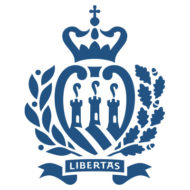
San Marino offre un’alternativa ai percorsi turistici in quanto paese meno visitato d’Europa. A San Marino sono arrivati circa due milioni, provenienti soprattutto da altri paesi europei.
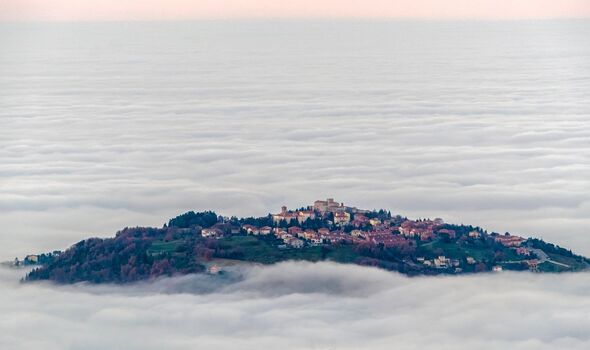
Il Monte Titano domina lo skyline di San Marino offrendo viste limpide fino al Mar Adriatico. Le panchine fiancheggiano le pendici del monte offrendo agli escursionisti un posto dove sedersi in mezzo al verde.
San Marino ha un ricco patrimonio culinario influenzato dalla cucina dell'Italia settentrionale, con una forte tradizione nella produzione del formaggio. La cucina sammarinese è caratterizzata da sostanziosi piatti di pasta e carne, e la gente del posto ha un affetto speciale per una focaccia ripiena conosciuta come piada. Inoltre, il paese ha una lunga storia di produzione di vino che risale a quasi 2.000 anni fa. In particolare, la produzione locale di vino prevede l'invecchiamento delle bottiglie in grotte con temperature ottimali, aggiungendosi all'offerta gastronomica unica di San Marino.
Per informazioni e appuntamenti non esitate a contattarci cons.londra@gov.sm
Notizie dal Consolato
Consulate of San Marino in London Grants Patronage to eccoRally 2025
The Consulate of San Marino in London is delighted to announce its official patronage of eccoRally 2025, the prestigious FIA‑sanctioned eco‑rally championship. This marks a moment of exceptional pride and visibility for our nation in the realm of sustainable…
Consul Bragagni Meets with Albanian Ambassador in London
At the invitation of H.E. Dr Uran Ferizi, Ambassador of the Republic of Albania to the United Kingdom, on 24 June 2025, Consul Maurizio Bragagni paid an official visit to the Embassy of Albania in London for a cordial…
Celebrating His Majesty The King’s Birthday: Strengthening Diplomatic Ties
The Consulate of the Republic of San Marino to the United Kingdom on 14th Jun 2025 was deeply honoured to host a Reception in celebration of His Majesty The King’s Birthday, following the magnificent Trooping the Colour ceremony. Held…
Meeting Between Consul Maurizio Bragagni and the High Commissioner of India in London
Following the ceremonial Trooping the Colour event held in central London, celebrating His Majesty King Charles III’s birthday, Consul Maurizio Bragagni met with His Excellency the High Commissioner of India to the United Kingdom, HE Mr Vikram K. Doraiswami,…
Call for Nominations: New Edition of the Emma Rossi International Award
The Consulate of San Marino in London is pleased to announce the opening of nominations for the new edition of the Emma Rossi International Award, titled “WOMEN WHO CHANGE THE WORLD”. This distinguished award, promoted by the Emma Rossi…
Consul Bragagni Appointed Honorary Councillor of the Italian Chamber of Commerce in the UK
On 2 June 2025, Consul Bragagni was appointed as Honorary Councillor of the Italian Chamber of Commerce and Industry for the United Kingdom (ICCIUK). This distinction reflects both his longstanding commitment to strengthening economic and cultural ties between Italy…
